You´ve read my previous post about the utilization of moulds in modern GRP boatbuilding. Every time I am underway, I try to keep my eyes open for stories. And its often the unseen, the small, the discreet and humble that is most interesting, at least for me. Like this one, another little detail I´ve noticed during my last visit to the Beneteau shipyard with prospect clients. I am very happy and humbled to have been greenlighted to publish it. Usually, Beneteau is very secretive and moderate in this respect. Especially in connection with such a sensitive topic: It´s about the avoidance of plastic waste in vacuum infusion.
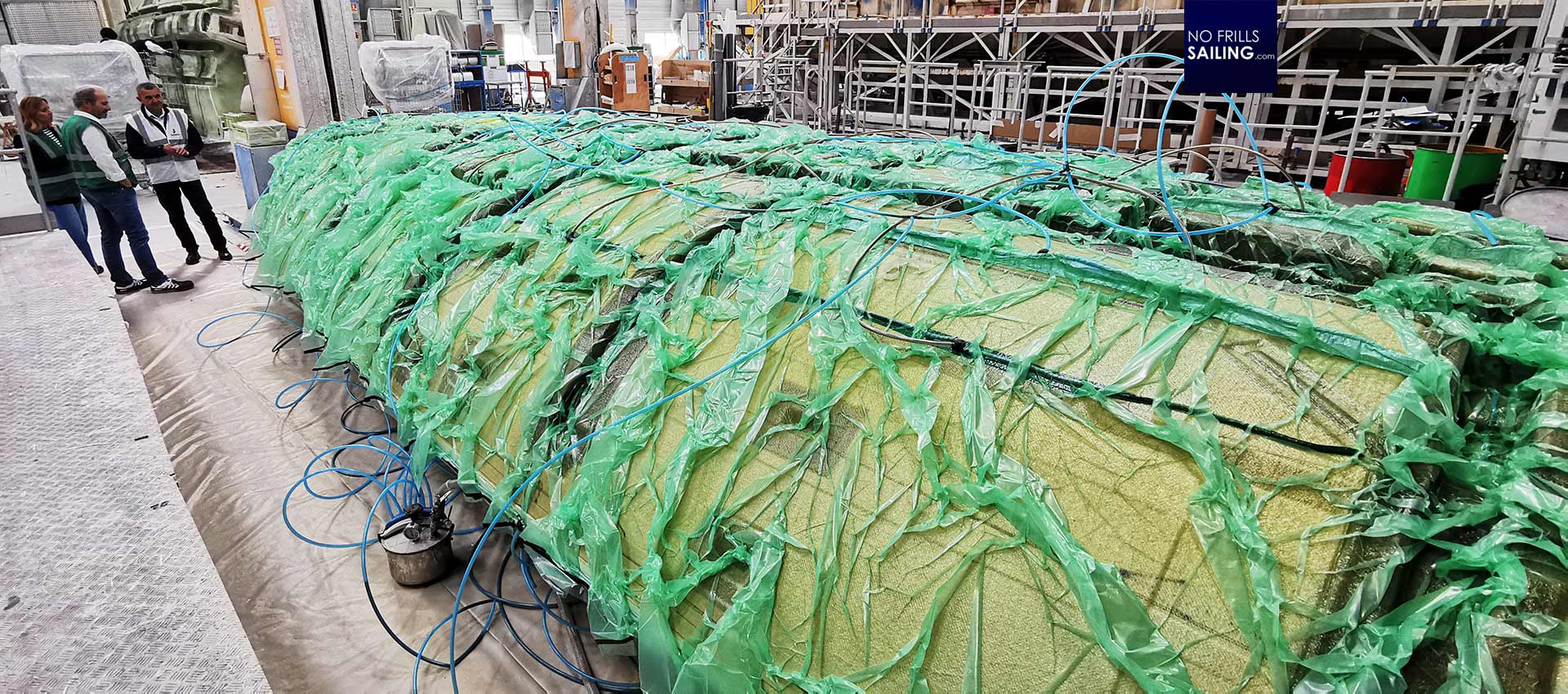
The production of a modern glassfiber reinforced plastic boat uses up a lot of energy and produces lots of waste. A big problem is the single use plastic waste that comes with classic vacuum infusion production methods. Guys at Beneteau, as it seems, did have a flash of wit. This article is about a test project currently underway that – if proven successful, feasible, durable and effective – could mean a huge step forward to create a more sustainable boat production.
A curse: Plastic boats, eating up plastic
First of all: Why is there so much plastic waste, especially in vacuum infusion? Well, as you can see in the picture above and below, in order to create a vacuum, the mould into which the glassfiber mats are put must be wrapped and airtightly sealed in – you´ve guessed it – plastic. This is a thick green foil that is loosely planted all over the mould. At the sides the foil is connected to the mould and sealed. There are some openings onto which pipes are connected. It´s those pipes through which the vacuum will suck out all the air between mould and plastic wrap.
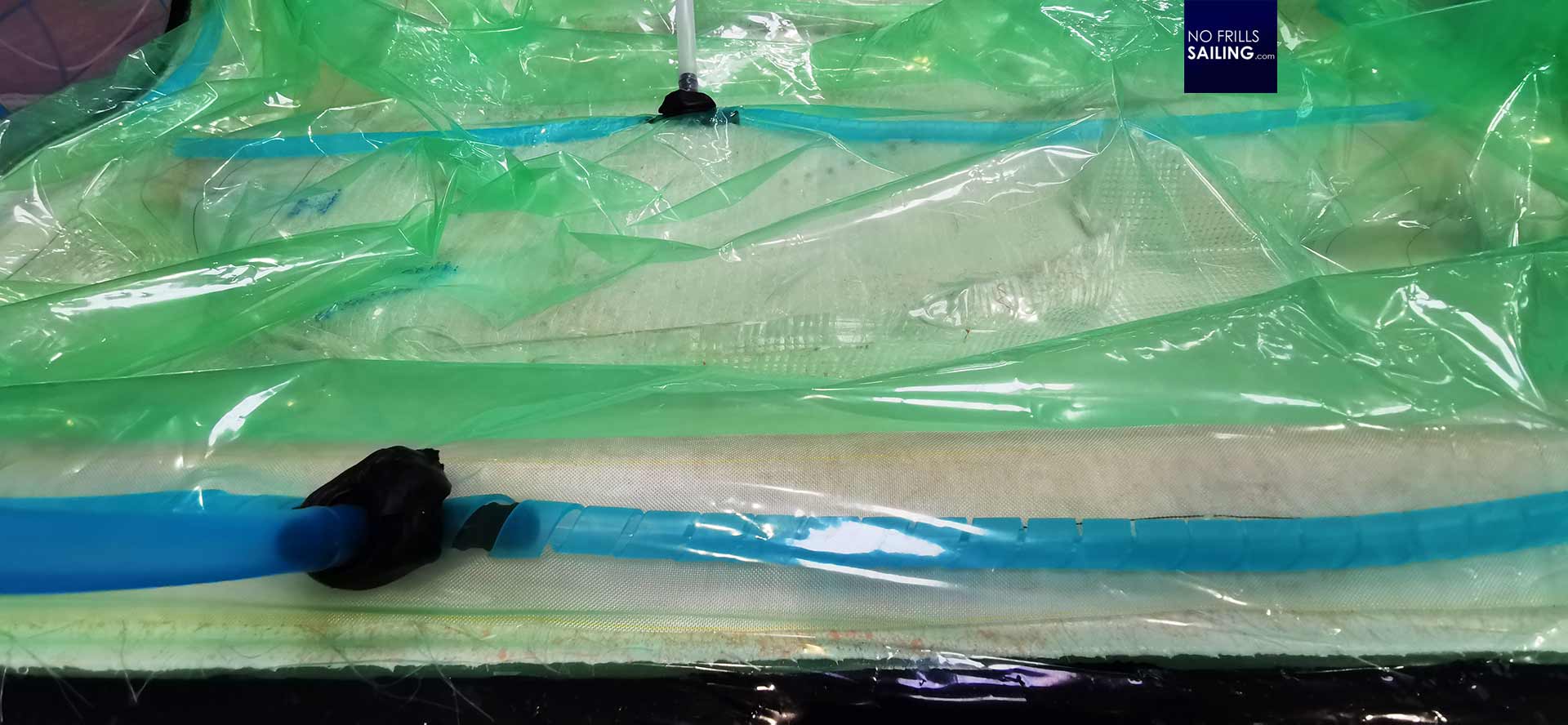
Another set of pipes is connected, through which the resin is sucked into the mould. It´s a great system that works absolutely perfect: GRP parts made in vacuum infusion technique are generally lighter and thinner than hand laminated parts. For many areas of the boat, vacuum infusion is the best option out of all available production techniques. The problem is, that the whole plastic wrap, the connectors and the pipes are made of plastic. And those, once used for a single time, will be ripped off from the part. And disposed of. In the end, literally, the plastic boat will “eat” up a lot of plastic before itself turns solid plastic.
An ingenious idea
As we enter into a production hall where smaller parts are laminated, I discover a partition where the unusual color blue attracts my eyes. Upon coming nearer I instantly discover that it is here where something very special is taking place. Seemingly proud, the ladies working there – after getting a nod from our guides – explain what they are doing here. They use the example of a gas bottle locker that is made here.
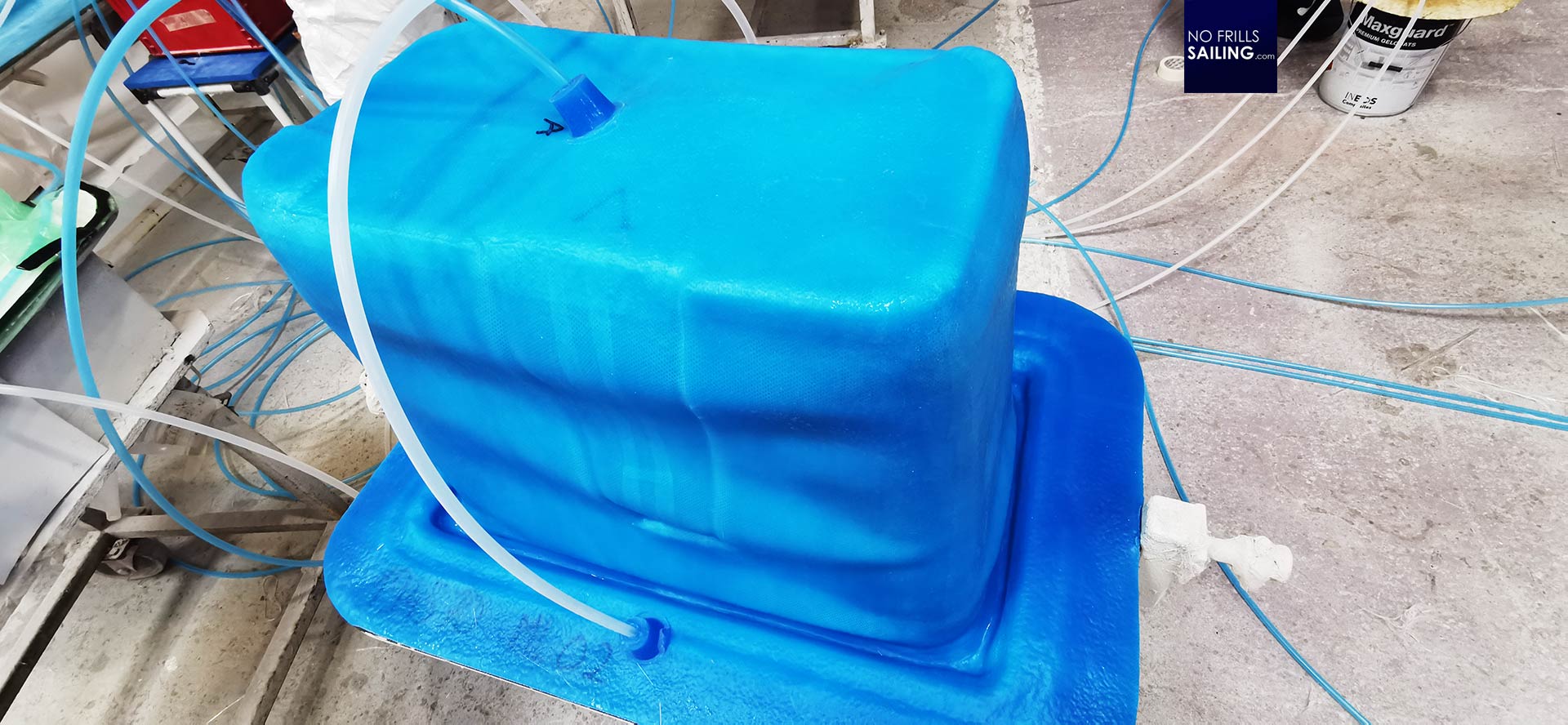
Instead of wrapping the mould with the usual single-use green plastic foul, they just impose a large shiny blue wobbling hood over the mould. I touch it – it feels very familiar. It´s the soft feeling that only Silicone has. The hood works just like the green plastic wrap – it is soft and stretchy enough to shrink under vacuum and nestle as tight as possible onto the GRP-resin underneath it.
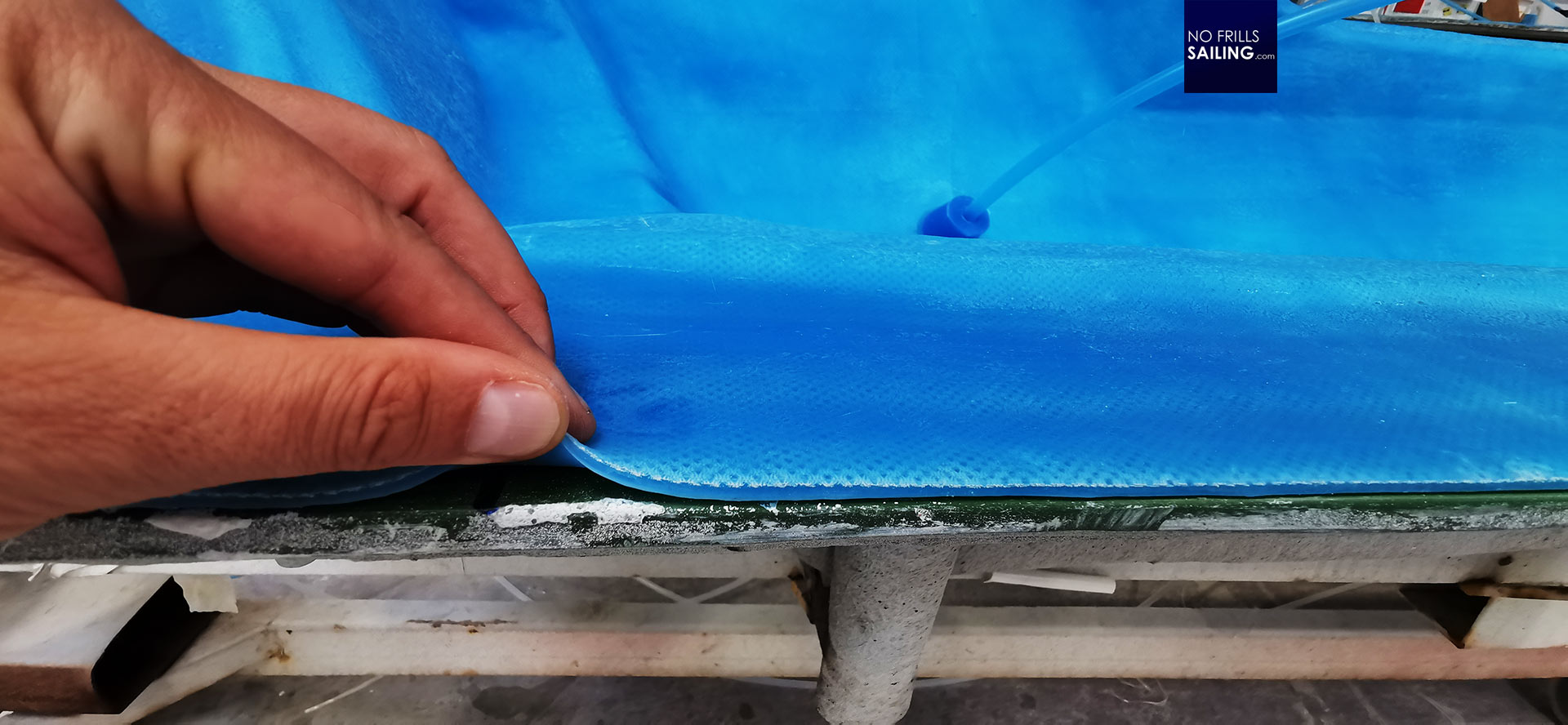
The Silicone “hat” has a wide “brim” that is going all around along the edge of the mould. The surface area combined with the pressure of the Earth´s air column that is resting on it once the air is sucked out. As the team explains, utilizing those new Silicon “huts” substituting the single use plastic covers, they as well need no sealant anymore. It´s just the power of the vacuum doing the job. An amazingly easy and simple system, as it seems.
Learning by doing
The area we are standing it is not very large. The parts in the making neither: The largest one looks like an elongated GRP-cover not longer that two meters, most of the other parts are hatches, flaps or small containers. As they tell me, it´s a pilot project to evaluate the feasibility and fine tune the Silicone parts. Like how thin or thick must they be? Will they deteriorate over time? Can they be cleaned and re-used saving time and efforts?
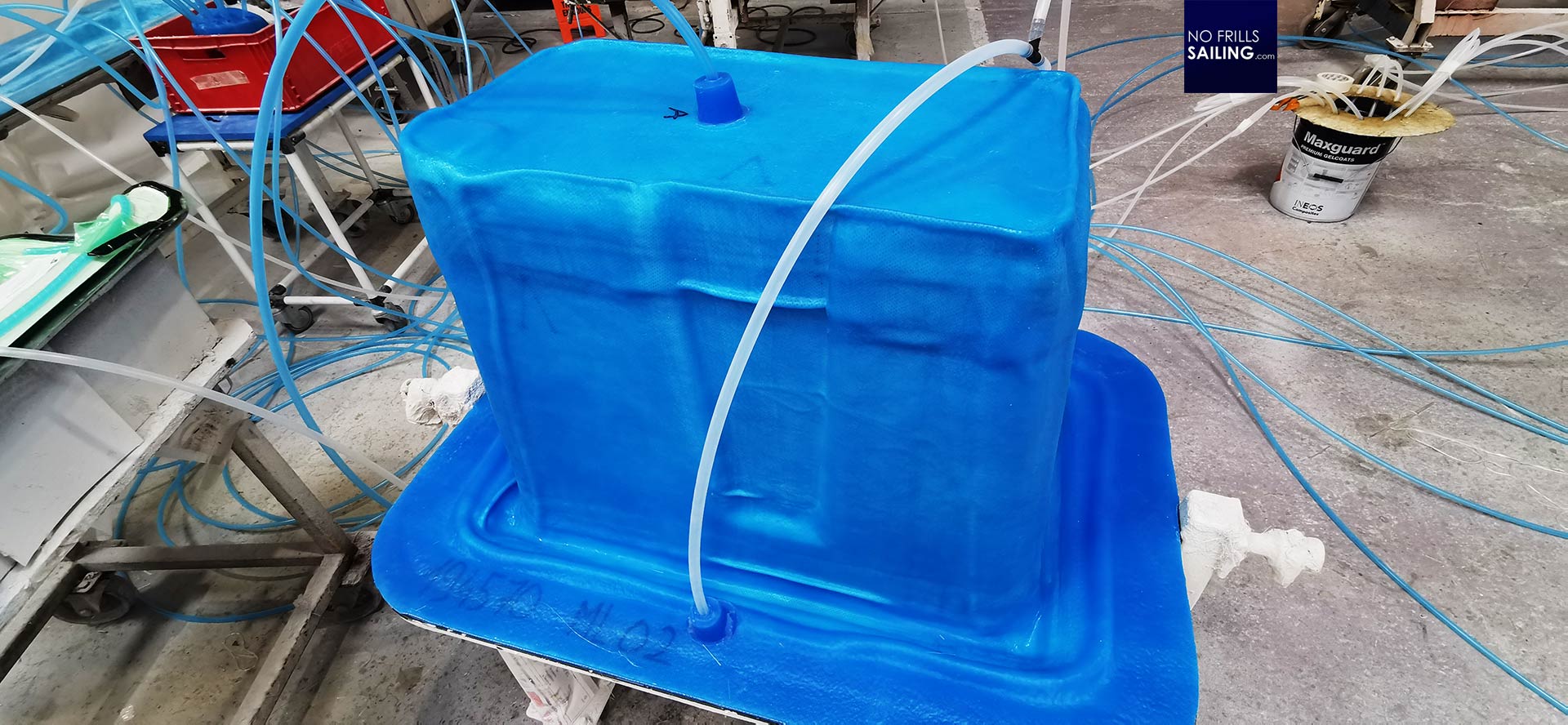
It´s a learning curve and certainly a very steep one. A company like Beneteau can not only more afford to source a part of the turnover to research and development, it´s indeed much easier for them to let new technology be integrated into the ongoing live production. What I find most exciting is the sheer calmness and modesty with which the ladies in the production as well as the management are talking about this.
One step at a time
In this, I am absolutely happy that Beneteau chose this way: Instead of huge PR and marketing-stunts which all too often turn out to be paper tigers and greenwashing efforts, they just do things. A year ago I almost by accident got to know that the shipyard already was making a huge chunk of their small GRP parts with natural sourced fibers instead of PVC or glassfibers – equalizing hundreds of tons of otherwise used up crude oil-based materials.
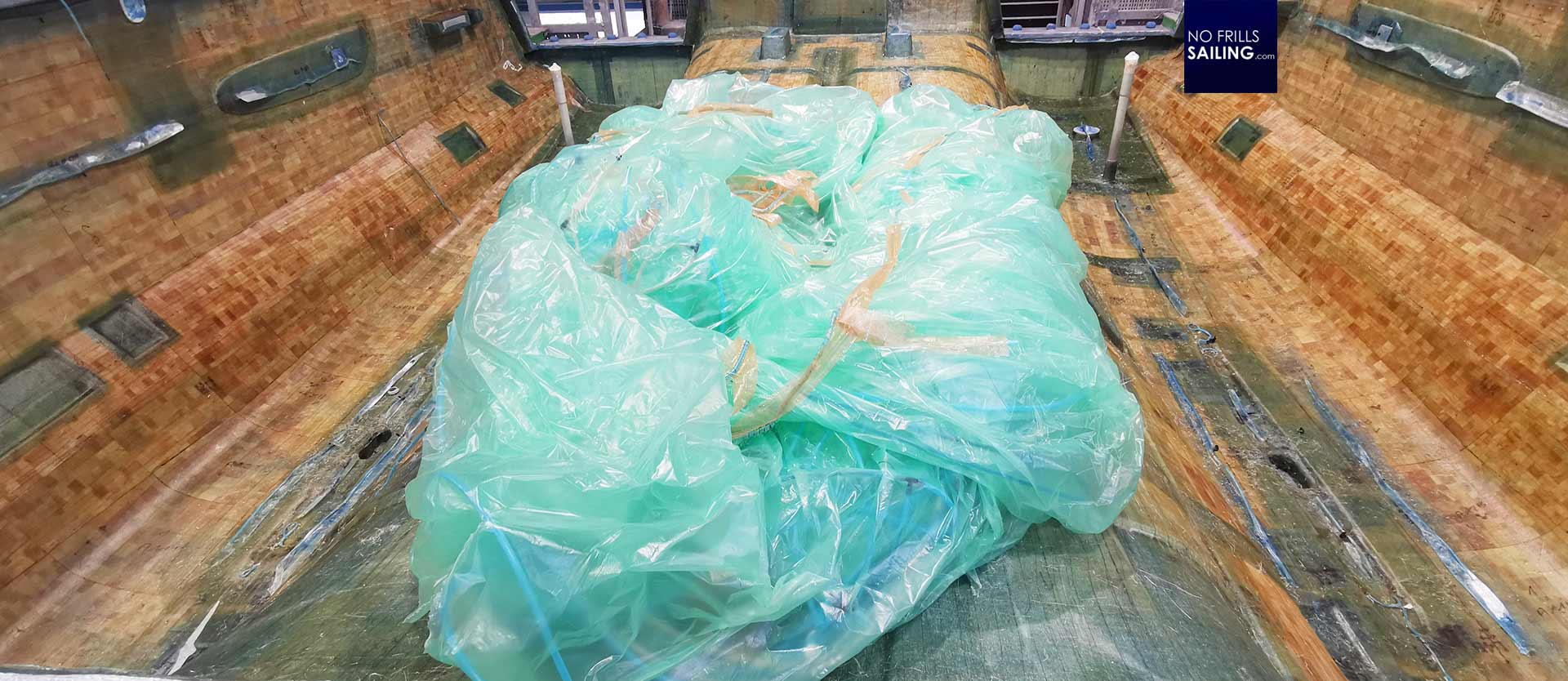
One step at a time, steady and constant. This seems to be strategy here and I bow down to it. Well done! This is how you improve production techniques, the product and in the end the ecological footprint and impact of your company. Instead of trying to revolutionize the industry by selling snake oil, there are indeed so many little things which could turn out to be real game changers. I thought you might find this little detail, spotted by chance in a corner in one of the halls, interesting … and it was, right?
You might find these related articles interesting too:
Electric avenue: First 44 testbed for new technologies
Is sustainable boatbuilding even possible?
